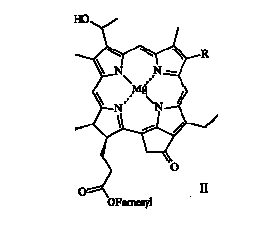

It is now well established that the red metallo porphyrin pigments which occur almost ubiquitously as complex mixtures in organic-rich marine and lake sediments and petroleums result mainly from diagenetic modification of the chlorophylls of phototrophic organisms present in the water column of the depositional setting. Following isolation of individual components from the mixtures, using high performance liquid chromatography (HPLC), the chemical structures of over forty widely occurring components have been determined in recent years, using high field nuclear magnetic resonance spectroscopy (1H NMR).
We have used this approach to characterise, inter alia, a novel series (Ia-c) of trace components isolated from the free base porphyrin fraction obtained after demetallation of the iron porphyrin fraction of the Permian Kupferschiefer (Lower Rhine Basin). These components are clearly diagenetic products of members (IIa-c) of one of the two bacteriochlorophyll d series uniquely biosynthesised by green strains of the Chlorobiaceae bacteria. Since these green sulphur bacteria are strict anaerobes, the porphyrins Ia-c are palaeoenvironmental molecular markers for the existence of photic zone anoxia within a highly
stratified water column during Kupferschiefer deposition and their derivation from green strains of the bacteria suggests that the chemocline occurred only a few metres below the surface.
Just as lipid biomarker distributions obtained by combined gas chromatography-mass spectrometry are used in palaeoenvironmental assessment, we have developed a combined high performance liquid chromatography-mass spectrometry approach which allows routine characterisation of porphyrin distributions. Application of this HPLC-MS approach to a variety of organic-rich sediments of different ages and depositional settings reveals the development of photic zone anoxia to have been a commonly occurring feature.

Fig. 1.